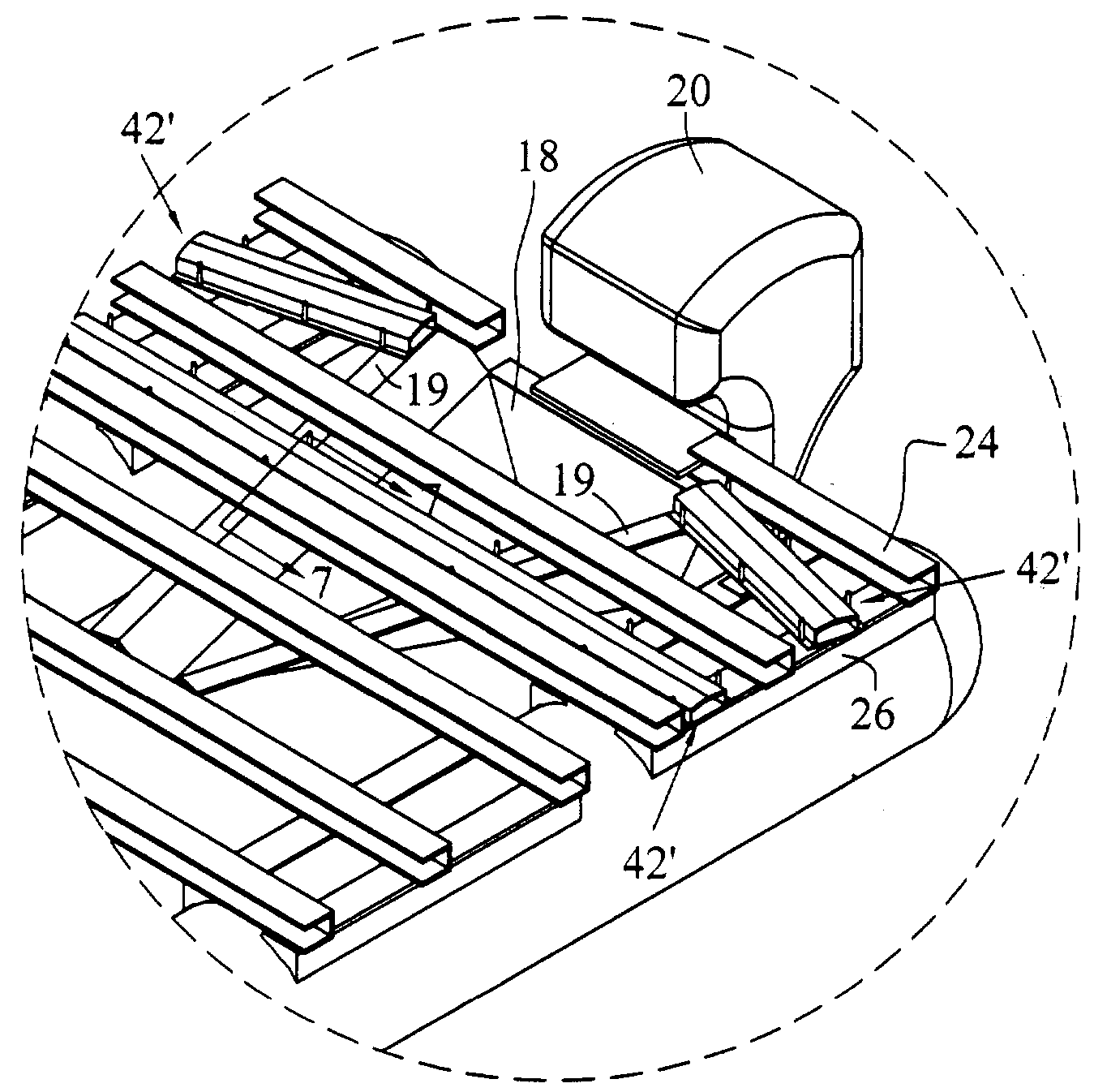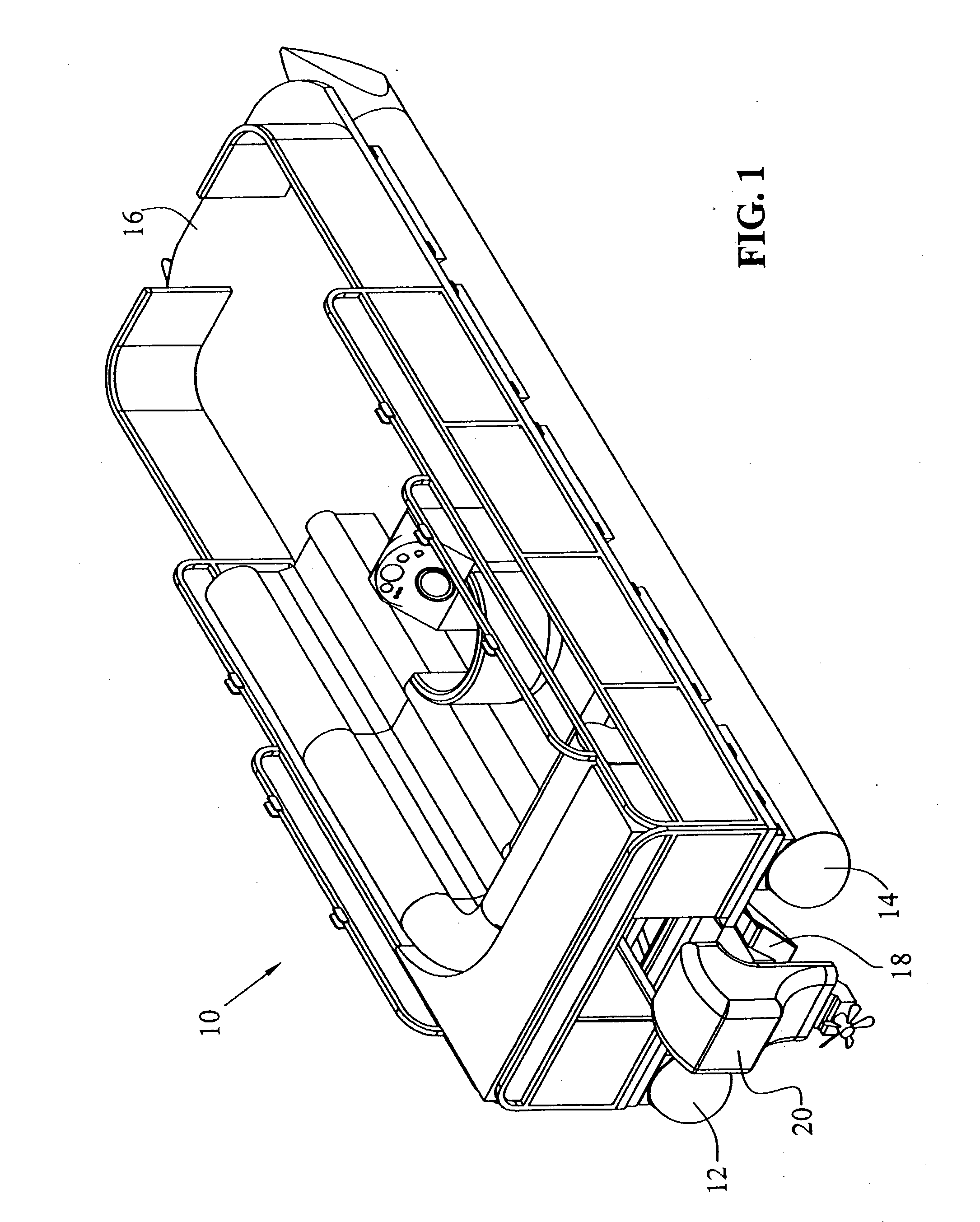Isolated motor pan for watercraft
a technology of isolated motors and watercraft, which is applied in the direction of marine propulsion, special-purpose vessels, vessel construction, etc., can solve the problems of reducing the enjoyment of watercraft passengers, high vibration levels and high vibration on the deck of watercra
- Summary
- Abstract
- Description
- Claims
- Application Information
AI Technical Summary
Benefits of technology
Problems solved by technology
Method used
Image
Examples
Embodiment Construction
[0020] The embodiments of the invention described herein are not intended to be exhaustive, nor to limit the invention to the precise forms disclosed. Rather, the embodiments selected for description have been chosen to enable one skilled in the art to practice the invention.
[0021] Referring first to FIG. 1, numeral 10 generally indicates a watercraft. Although the type of watercraft that may be used in conjunction with this invention may vary, the watercraft 10 illustrated in FIG. 1 is generally referred to as a pontoon boat. In the embodiment depicted, watercraft 10 includes a first pontoon 12, a second pontoon 14, a deck 16, a motor pan 18 and a motor 20. Although the watercraft 10 includes only two pontoons 12, 14 in the present embodiment, the number of pontoons may be increased as is known in the art without varying from the spirit and scope of this invention. In addition, in other embodiments of the invention, the watercraft 10 may be a different type of watercraft including ...
PUM
 Login to View More
Login to View More Abstract
Description
Claims
Application Information
 Login to View More
Login to View More - R&D
- Intellectual Property
- Life Sciences
- Materials
- Tech Scout
- Unparalleled Data Quality
- Higher Quality Content
- 60% Fewer Hallucinations
Browse by: Latest US Patents, China's latest patents, Technical Efficacy Thesaurus, Application Domain, Technology Topic, Popular Technical Reports.
© 2025 PatSnap. All rights reserved.Legal|Privacy policy|Modern Slavery Act Transparency Statement|Sitemap|About US| Contact US: help@patsnap.com



